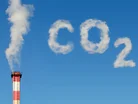How Do Leading Companies Approach Scope 3 Carbon Offsetting?

Scope 3 carbon offsetting involves compensating for indirect emissions outside a company's direct operations and energy use.
It can be achieved by investing in projects that reduce or remove greenhouse gases from the atmosphere, targeting emissions that are challenging to eliminate from a company's supply chain and other indirect activities.
While it's difficult to definitively rank leaders in Scope 3 offsetting due to varying practices and reporting standards, several companies have made significant efforts to address these emissions through a combination of reduction and offsetting strategies:
- Microsoft is committed to being carbon-negative by 2030 and plans to remove all its historical carbon emissions by 2050. The company invests in various carbon removal projects to manage its Scope 3 emissions effectively.
- As part of its climate strategy, Unilever aims for net-zero emissions across its value chain by 2039. The goal includes significant efforts to reduce and offset Scope 3 emissions, demonstrating a holistic approach to sustainability.
- Nestlé has pledged to halve its emissions by 2030 and reach net zero by 2050. Nestlé's strategy includes comprehensive initiatives and offsetting programs to address its Scope 3 emissions throughout its supply chain.
- Apple strives to become carbon neutral by 2030 across its entire business, including its manufacturing supply chain and product lifecycle. This commitment involves significant reductions and offsetting of Scope 3 emissions.
- Amazon's Climate Pledge aims to achieve net-zero carbon emissions by 2040. To tackle its Scope 3 emissions, it is investing in nature-based solutions and other offsetting projects.
“We’re very pleased to announce this deal with 1PointFive, a pioneer in the Direct Air Capture space, which is building the largest DAC project worldwide," said Brian Marrs, Senior Director for Carbon Removal and Energy at Microsoft, when the the single largest purchase of carbon dioxide removal (CDR) credits to date was finalised.
"To achieve the gigatons of removals needed this century, first-of-a-kind projects like STRATOS are essential to move from pilots to scale," Brian continues.
"DAC plays an important role in Microsoft’s carbon removal portfolio supporting our broader goal of becoming carbon negative by 2030."
While these companies are notable for their carbon offset efforts, the most effective approach to managing Scope 3 emissions involves prioritising emission reductions in the value chain before using offsets for emissions where elimination is impossible.
Challenges in implementing Scope 3 carbon offsetting
Implementing Scope 3 carbon offsetting is complex and presents several challenges related to data quality, stakeholder engagement and the effectiveness of offsetting projects.
Accessing reliable data on Scope 3 emissions is a significant challenge.
Companies often need complete, fragmented and updated information about emissions in their value chains. It makes it difficult to measure, track and report these emissions accurately, leading to potential gaps in accountability.
Engaging suppliers and other stakeholders to gather accurate emissions data and implement reduction strategies can be daunting.
Businesses often need more awareness gaps, contractual obstacles and limited incentives for stakeholders to participate in emissions reporting and reduction initiatives.
Global supply chains are complex, making it challenging to track and manage Scope 3 emissions. Companies must collaborate with numerous suppliers and partners, which can be resource-intensive and time-consuming and often require significant logistical and financial investment.
Companies risk accusations of greenwashing if their offsetting efforts are perceived as inadequate or rely too heavily on offsets without substantial emissions reductions. They must carefully select credible offsetting projects that provide genuine environmental benefits and transparency to avoid greenwashing.
Ensuring the quality and effectiveness of carbon offset projects is also crucial. Companies must evaluate factors such as additionality (the project's ability to achieve emissions reductions that would not have occurred otherwise), permanence (the longevity of the offset's impact) and verification by third-party auditors.
High-quality offsets are often more expensive and identifying reliable projects can take time and effort.
Meanwhile, increasing regulatory requirements and growing investor expectations for transparency and accountability put additional pressure on companies to accurately report and offset their Scope 3 emissions.
Meeting these expectations requires stringent data management and clear communication strategies.
Addressing the challenges
Companies need a strategic approach to Scope 3 carbon offsetting to navigate these challenges, which includes:
- Improving data transparency: Investing in better data management systems to accurately measure and report Scope 3 emissions.
- Effective stakeholder engagement: Building strong partnerships and clear communication channels with suppliers and stakeholders to foster collaboration on emissions reduction efforts.
- Selecting high-quality offsets: Carefully choose offset projects that offer verifiable, additional and permanent benefits to ensure genuine environmental impact.
- Combining reduction and offsetting strategies: Prioritising emissions reduction in the value chain before turning to offsetting for emissions that are impossible to eliminate.
By focusing on these strategies, companies can enhance the credibility of their carbon-offsetting efforts and make meaningful progress toward their sustainability goals.
Receive the next edition of Scope 3 Magazine by signing up for its newsletter.
As part of this portfolio, make sure you check out Procurement Magazine and also sign up to our global conference series - Procurement & Supply Chain LIVE.
Also check out our Sister Brand, Sustainability Magazine and sign up to its global conference series - Sustainability LIVE.
Scope 3 Magazine is a BizClik brand.
Featured Articles
Estonia, Latvia and Lithuania join the European grid, cutting ties with Russian energy, a move that boosts regional security and sustainability
TÜV SÜD: New battery regulations bring Scope 3 hurdles, requiring sustainable sourcing, digital traceability and design changes increasing compliance
Nissan is scaling up its use of green steel, reducing CO2 emissions in its supply chain as part of its goal to achieve carbon neutrality by 2050

